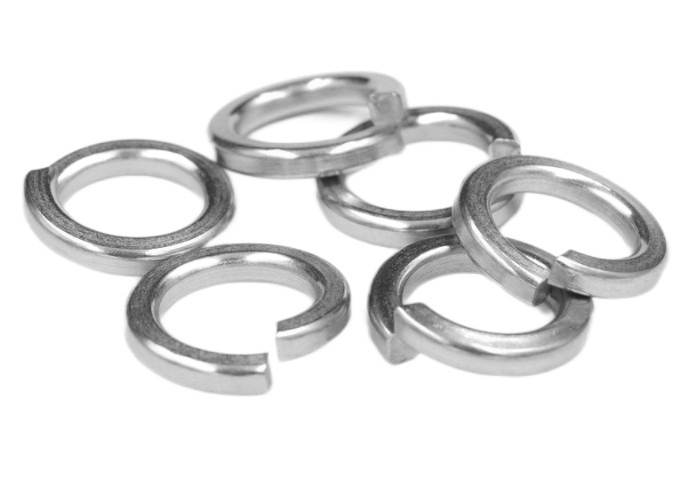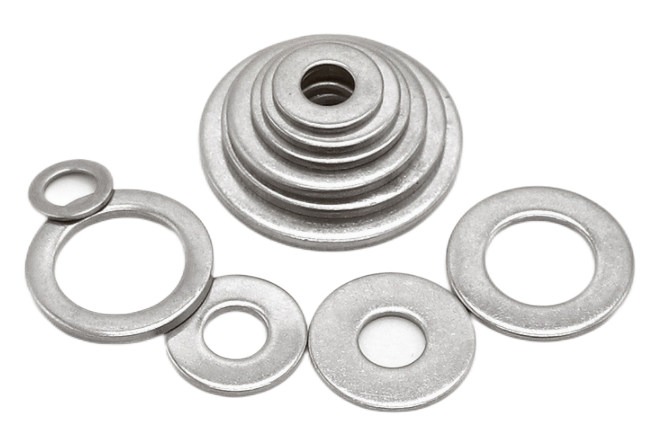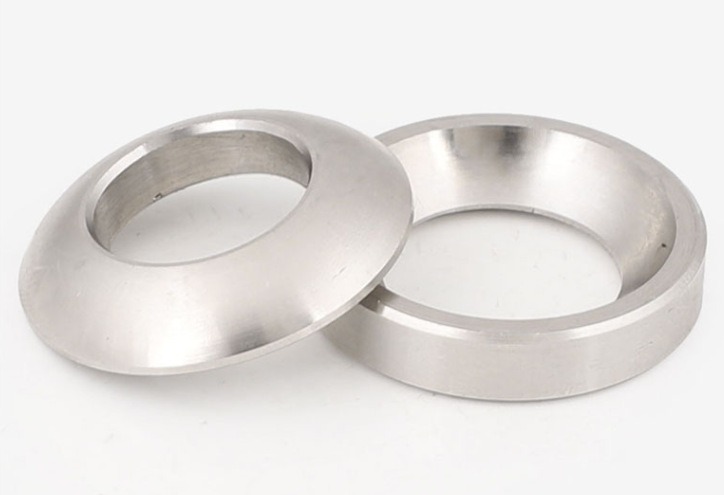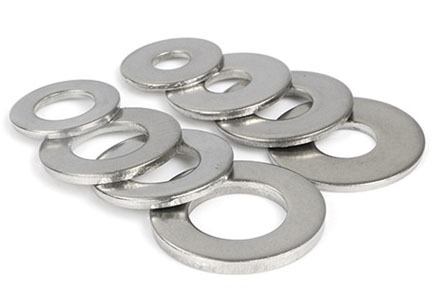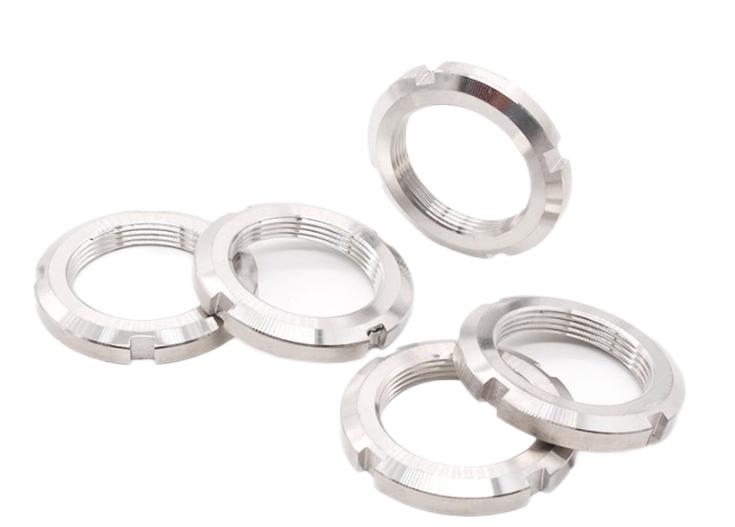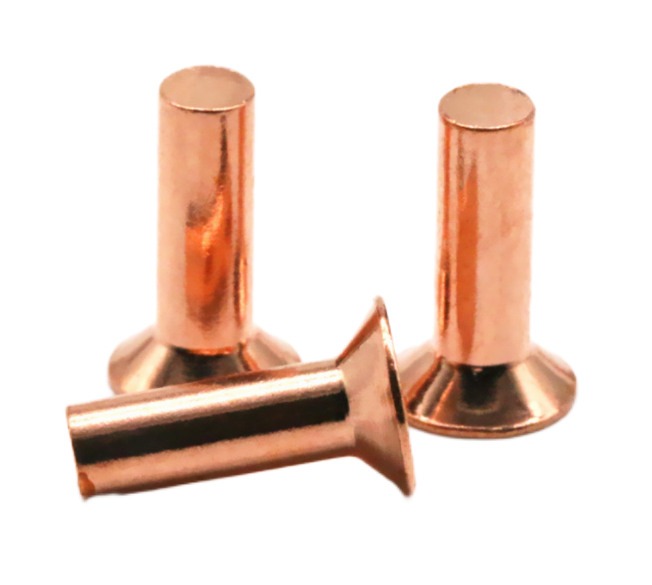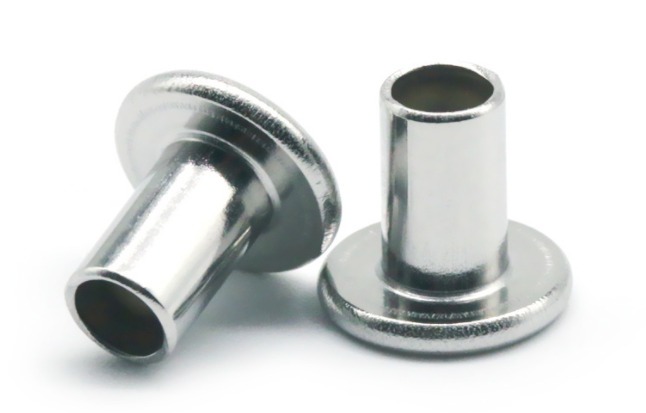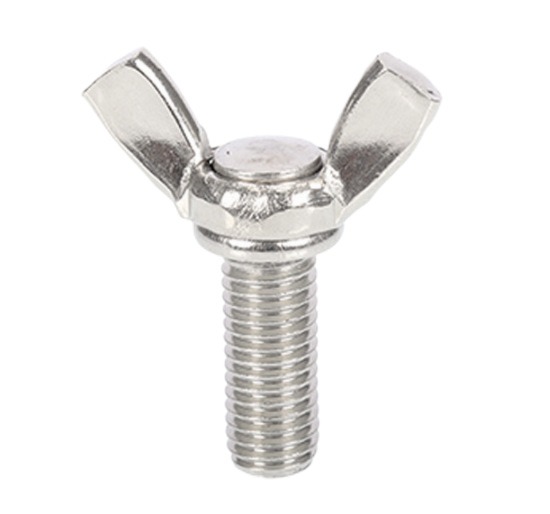What Are the Differences Between Spring Washers and Flat Washers?
What is the function of a flat washer?
Flat washers are mainly stamped out of iron plates, and the shape is generally round or square, with a hole in the middle. This hole size specification is generally formulated according to the diameter of the bolt or according to customer requirements.
Usually, the same size bolts are suitable for flat washers with the same bore diameter and different outer diameters and thicknesses. For example, the hole diameter of the flat washer used for M10 bolts is 10mm, and the outer diameter and thickness are not fixed.
The main functions of flat washers are:
1. It can increase the contact area between the machine and the screw.
2. It can eliminate the damage of the spring washer to the surface of the machine when the screw is removed. When used, it must be: the flat washer is next to the machine’s surface, and the spring washer is between the flat washer and the nut. Flat washers are used to increase the bearing surface of the screw. In order to prevent the screw from loosening, the spring washer acts as a certain amount of buffer protection when it is stressed.
3. Flat washers cannot play a role in anti-vibration, nor do they have the function of preventing loosening, so they need to be used carefully.
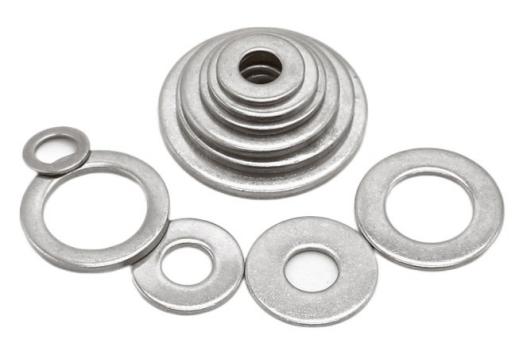
What is the function of the spring washer?
A spring washer is installed under the nut to prevent the nut from loosening.
The commonly used spring washers are M3, M4, M5, M6, M8, M10, M12, M14, and M16. These specifications are more commonly used.
The main functions of the spring washer are:
The role of spring washer is mainly used to prevent loosening. After the nut is tightened, the spring washer gives the nut an elastic force, which presses against the nut so that it is not easy to fall off and increases the friction between the nut and the bolt.
For example, the bolts connecting the motor and the base generally need spring washers. Because the motor vibrates, the nut will come loose without the spring washer.
Therefore, spring washers are generally installed on fasteners on equipment with vibration.
All in all, the spring washer can prevent loosening and increase the preload. The flat washer does not have this function, and can only be used to increase the tightening contact area, prevent friction between the bolt and the workpiece, and protect the surface of the connector.
However, some special connections, such as those that rely mainly on compression to generate frictional force to transmit power, cannot use spring washers, which will reduce the rigidity of the connection. When the strength of the connected parts is low, flat washers or flange bolts can be used to increase the contact area. In the presence of vibration, spring washers can be used.
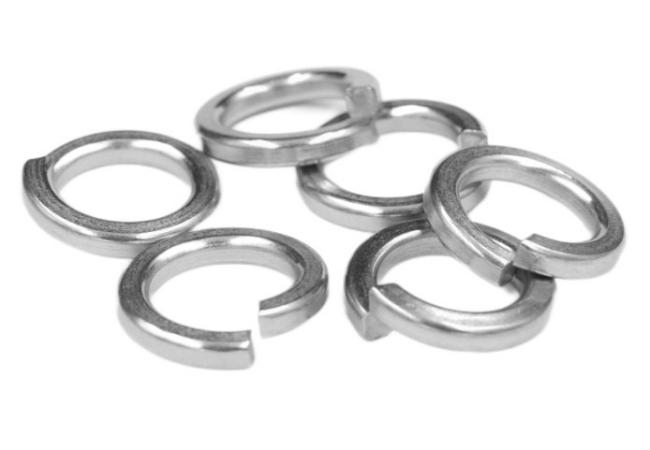
When should a flat washer be used and when should a spring washer be used?
1. Flat washers can be used when the load is relatively small and the vibration load is not subjected.
2. In the case of relatively large loads and vibration loads, a combination of flat washers and spring washers must be used.
3. Spring washers are basically not used alone, they are used in combination.
What are the installation sequence of spring washers and flat washers?
The flat washer should be installed first and then the spring washer.
Because when the nut is tightened, the washer will turn with it. The spring washer has sharp corners, and if the spring washer is installed first, it will scratch the connector. The flat washer is flat and is in flat contact with the connecting piece, so it will not scratch the connecting piece when rotated. Therefore, install the flat washer first and then install the spring washer.
Bolt assembly
Bolt assembly refers to a three-assembly assembly of bolts, coupled with spring washers and flat washers.
Rigorous hardware connections are usually used in conjunction with crossbar nuts and spring washers are required.
Because if there is a gap between the bolts and nuts when they are tightened, after a long period of use, it is likely to cause the screws to loosen.
In actual use, due to the characteristics of the thread, after the nut is tightened, it is easy to rotate along the direction of the thread, resulting in the loosening of the nut.
To solve this problem, spring washers appeared. The spring washer has a pre-tension. After the nut is pressed against the spring washer, under the action of the pre-tension, the nut will no longer be loose.
The ordinary washer is a support under the pre-tension of the spring washer, which increases the pressing area of the pre-tension of the spring washer.
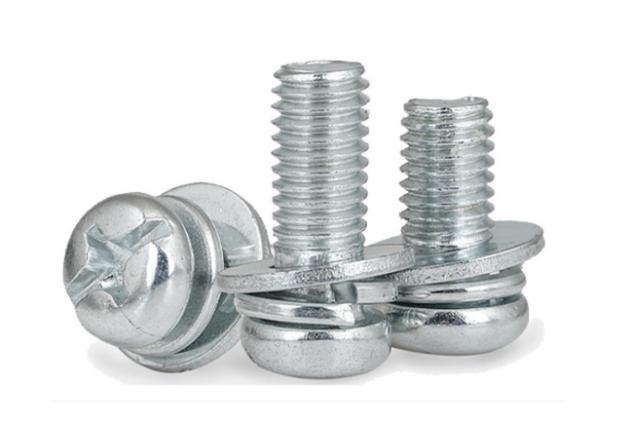
KENENG can not only provide a variety of washers such as flat washers and spring washers but also produce various standard and non-standard fasteners such as bolt assemblies. If you are sourcing fasteners, please do not hesitate to contact KENENG. We will provide you with the best solution and the best price.

